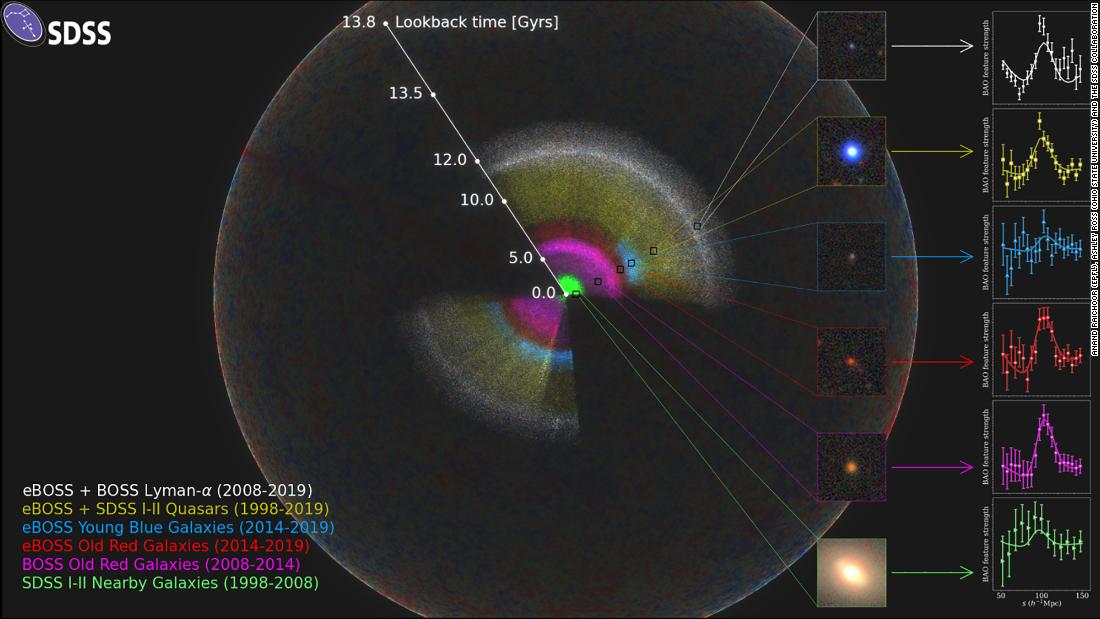
The Sloan Digital Sky Survey (SDSS), a project involving hundreds of scientists at dozens of institutions around the world, collected decades of data and mapped the universe with telescopes. With these measurements, spanning more than 2 million galaxies and quasars formed over 11 billion years, scientists can now better understand how the universe evolved.
“We know the ancient history of the universe and its recent history of expansion quite well, but there is a problematic gap in the middle of 11 billion years,” said cosmologist Kyle Dawson of the University of Utah, who led the team that announced the SDSS findings on Sunday.
This is how it works: the map revealed the first materials that “define the structure in the Universe, starting from the moment the Universe was only about 300,000 years old.” The researchers used the map to measure patterns and signals from different galaxies, and to find out how fast the universe was expanding at different points in history. Looking back in space allows you to look back in time.
“These studies allow us to connect all of these measurements into a complete history of the expansion of the Universe,” Will Percival of the University of Waterloo said in the statement.
The team also identified “a mysterious invisible component of the Universe called ‘dark energy'”, which caused the expansion of the universe to start accelerating about six billion years ago. Since then, the universe has only continued to expand “faster and faster,” the statement said.
There are still many unanswered questions about dark energy: It is “extremely difficult to reconcile with our current understanding of particle physics,” but this puzzle will be left to future projects and researchers, the statement said.
Their findings also “revealed cracks in this image of the Universe,” the statement said. There were discrepancies between the researchers’ measurements and the data collected, and their tools are so precise that it is unlikely to be a mistake or a fluke. Instead, there could be exciting new explanations behind the strange numbers, such as the possibility that “a previously unknown form of matter or energy from the early Universe may have left a trace in our history.”
The SDSS “is not close to fulfilling its mission to map the Universe,” it said in the statement. “The SDSS team is busy building the hardware to begin this new phase (of star and black hole mapping) and awaiting new discoveries for the next 20 years.”
.